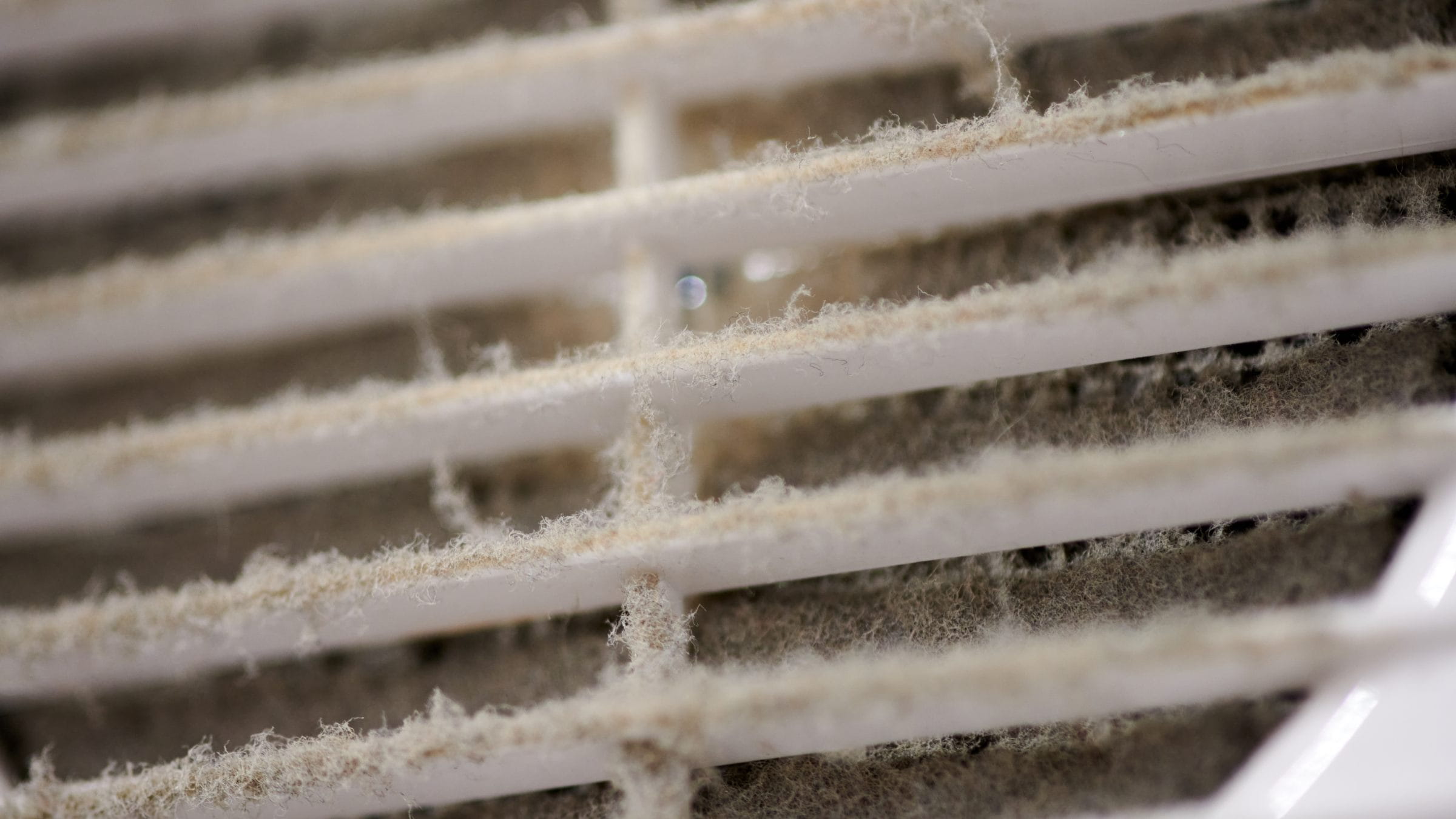Your respiratory health can rely on your HVAC system. Here’s how to ensure higher-quality air in your home

Looking to make the air in your home cleaner and healthier?
Constant air exchange and appropriate filtration help reduce air contaminants, which can contribute to myriad health problems, from short-term irritation of the respiratory system to potentially more serious, long-term issues.
We spoke with Michael Bisesi, PhD, CIH, a scientist who’s studied environmental and occupational health for more than 40 years. According to Dr. Bisesi, optimal ventilation is the primary thing to focus on to improve and sustain acceptable indoor air quality.
But should you pay for professional air duct cleaning? Buy the most expensive furnace filters?
There are a number of ways to help improve your home’s air quality, so first we need to understand the keys to optimal ventilation. Dr. Bisesi, the vice dean for Academic Affairs and Academic Administration and professor and interim chair of Environmental Health Sciences in The Ohio State University College of Public Health, helps explain.
When it comes to air quality, your home’s HVAC system is often the most effective tool under your control
Most houses and apartments in the United States now have a centralized system of air circulation, with ductwork throughout the structure and central pieces of heating and cooling equipment (like a furnace and air conditioner).
As Dr. Bisesi explains, this centralized mechanical ventilation system helps do what every space needs for high-quality indoor air: moving air into and through an appropriate filter, which removes indoor contaminants such as various types of dusts and other particulate matter, including pet dander. It then pulls in “fresh” outdoor air while filtering out allergens and other microbiological or chemical contaminants, whether generated from indoor or outdoor sources.
“Your mechanical and centralized heating, ventilation and air conditioning (HVAC) system typically achieves this by ‘blowing’ air into, throughout and out of the house through vents in the floors and walls,” he says. “It’s important not to block those vents because they work with one another to circulate that air efficiently for our comfort and health.”
The good news is that there are ways to optimize this system. But, depending on your home’s age and the sophistication of the ventilation system, there might be limits to what you can change.
Steps to ensure the air in your home is circulating well
1 Optimize your furnace filter and change it regularly (many HVAC experts suggest monthly)
When choosing a furnace filter, you want to look at its MERV rating and whether it includes activated carbon, Dr. Bisesi says.
“MERV” stands for minimum efficiency reporting value. The higher the MERV rating, the more effective the filter is at trapping very small particulate matter from the air. However, Dr. Bisesi notes, some HVAC systems can’t tolerate filters with the highest MERV ratings because they can’t efficiently pull air through the dense filtration — it puts too much wear on the motor. Your system’s manual might note restrictions on the type of filter it can use.
“I also recommend seeking out reputable brands,” he says. “Furnace filters available at home improvement stores tend to be high-quality compared to filters you might buy from other sources, such as some unknown online retailers.”
Regardless of its MERV rating, a furnace filter doesn’t effectively filter out gaseous odors or other volatile organic chemicals unless it includes activated carbon, which can trap many gases responsible for odors, Dr. Bisesi cautions.
“Activated carbon is optional for residential ventilation systems to trap gaseous contaminants,” he says. “In general and for most residential settings, however, the overall filter quality is most important.”
Although most ventilation filters are disposable after a period of use (one to three months), there are also some options for ventilation systems to have reusable, washable filters.
Unfortunately, Dr. Bisesi says, the particulate filtration efficiency for these types may be lower than the single-use disposable filter types.
2 Consider running your HVAC blower more often
Another control measure Dr. Bisesi says is worth considering is circulating air more often throughout the day using the system’s blower. When our doors and windows are closed, we’re relying on the HVAC motorized blower to move air into, throughout and out of the house. When the blower isn’t on, there’s no active air exchange, which, again, helps clear those air contaminants.
This requires some thought about the pros and cons of turning on your blower more often via the thermostat settings. The more you run that motor, the more energy you’re using.
“For your family, you may want to run the blower more often than the thermostat’s ‘auto’ setting, which activates the blower only when the thermostat senses the temperature is lower or higher than the desired temperature setting,” he says. “Most systems allow a manual or programmed 'on' setting that moves air continuously. Smart thermostats, especially, can make it easier to set timers for blowing more often when you’re actually home.”
The advantage of blowing air more frequently or constantly is lower stagnation (stuffiness) of air and fewer air contaminants.
“Ideally, we want to reach an appropriate balance between the air exchange rate (the number of times the air in a room is exhausted out and replaced with fresh air) and the energy it takes to exchange that air.”
3 Perform preventive maintenance on your HVAC system
An important reminder from Dr. Bisesi: It’s best to have a qualified, reputable HVAC professional inspect your system annually, or even twice a year — once before winter and once before the warmer seasons — to inspect both the heating and cooling elements of the equipment. They can ensure that everything is working efficiently and safely.
4 Clear air ducts
Professional air duct cleaning is a service offered by many HVAC and carpet cleaning businesses, but whether you need this service really depends on a few factors, Dr. Bisesi says.
“Air duct cleaning doesn’t need to be done routinely. There are some instances in which a thorough air duct cleaning might be warranted, such as after a major construction project that generated a lot of dust, or if you’ve moved into an older home and don’t know the history of particulate matter that could have built up in the ducts throughout the years.”
If you’re able to see some dust in your ductwork when you peer into the vents, he says, that’s not necessarily cause for concern. But if you know of substantial water damage or mold growth in your home, especially if there’s visible mold growth in a large surface area, air duct cleaning is usually worthwhile. It would be one important component of a mold remediation plan to ensure that mold spores don’t continue to spread throughout the house and contribute to inhalation and any related illness.
“In most cases, the most cost-effective way to sustain acceptable indoor air quality is to have an optimally running ventilation system with a high-quality, high-efficiency filter that’s changed frequently,” he says.
5 Consider supplementing with an indoor air purifier
If it’s not possible or practical to take some of these steps with your home’s central ventilation system, you can get additional circulation and filtration through a portable air purifier.
These portable machines aren’t designed to be the primary air cleaner for the home, but Dr. Bisesi says they can be excellent additions to better control particulate or gaseous elements in the air, whether they’re biological (viral droplets, dead skin, pet dander, hair, etc.) or chemical (cleaners, cooking smells, volatile solvents, etc.).
“However, I don’t recommend buying just any air purifier,” he says. “Take a look at Consumer Reports and similar consumer research resources to find a purifier that rates well in standardized testing. The U.S. Environmental Protection Agency (EPA) also has a free guide to help select an air purifier.”
You also should choose a purifier that’s sized correctly for the room you’ll use it in. Measure by volume and not just area — multiply the space’s width, length and height to determine the full volume of air space to purify. The goal is to ensure that the portable units operate at a flow rate to provide adequate air exchange or “clean air delivery rate,” he notes.
HEPA (high efficiency particulate air) filters are ideal for these purifiers and can theoretically remove at least 99.97% of dust, pollen, mold, bacteria and other airborne particles with a size of 0.3 microns or larger, according to the EPA.
“I don’t recommend portable purifiers that use ionization, because HEPA filter systems are already very effective, and ionization can convert oxygen or water in the air into free radical or ozone, which may irritate the eyes and respiratory system,” he says.
2024 Editor's Note: Michael Bisesi, PhD, CIH, retired from The Ohio State University in May 2024.

Now more than ever, environmental health researchers and practitioners are needed to address environmental issues and threats.
The Ohio State University College of Public Health offers Environmental Health degree programs and a Global One Health Certificate.
Learn More




